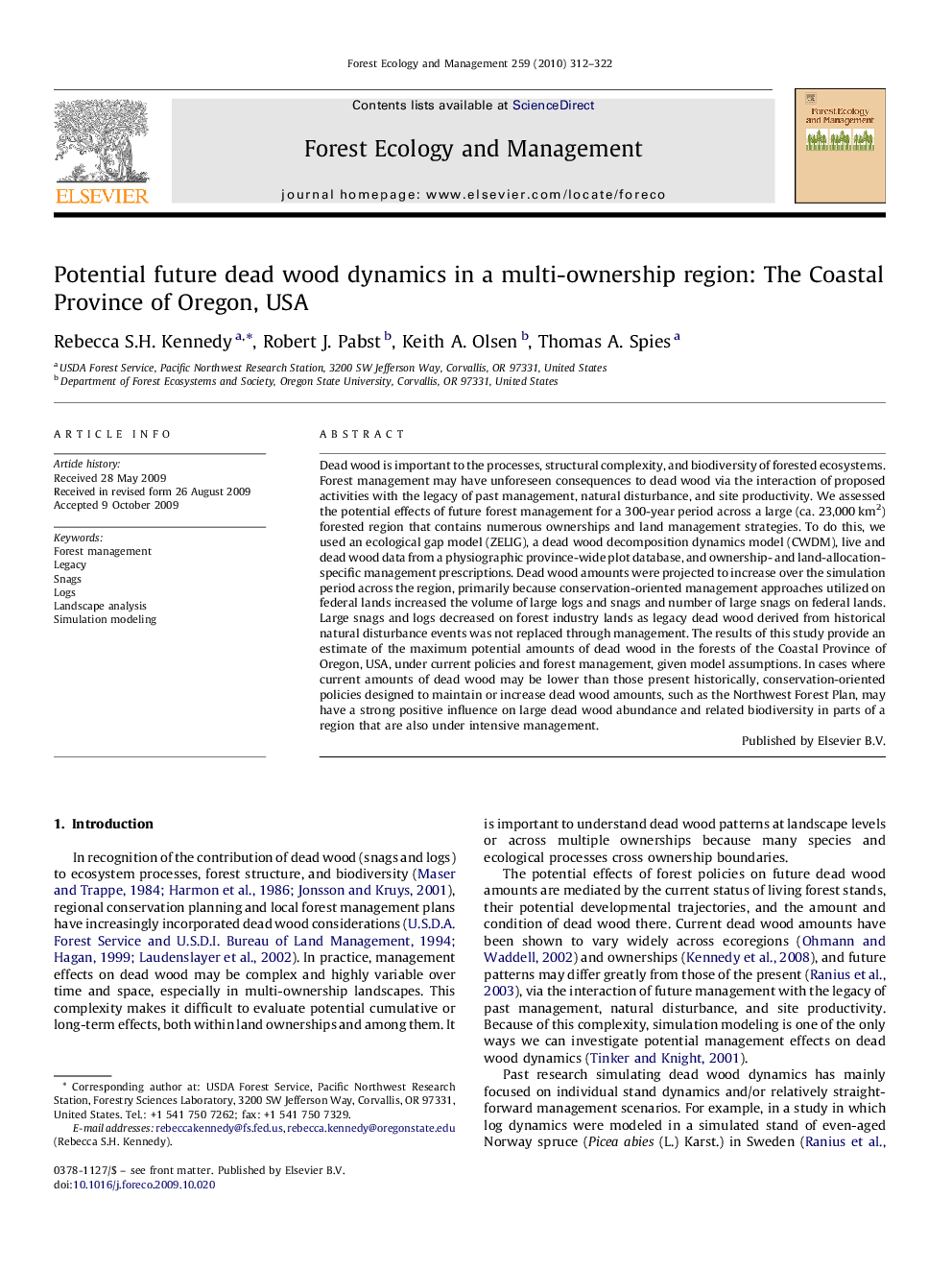| Article ID | Journal | Published Year | Pages | File Type |
|---|---|---|---|---|
| 10250557 | Forest Ecology and Management | 2010 | 11 Pages |
Abstract
Dead wood is important to the processes, structural complexity, and biodiversity of forested ecosystems. Forest management may have unforeseen consequences to dead wood via the interaction of proposed activities with the legacy of past management, natural disturbance, and site productivity. We assessed the potential effects of future forest management for a 300-year period across a large (ca. 23,000Â km2) forested region that contains numerous ownerships and land management strategies. To do this, we used an ecological gap model (ZELIG), a dead wood decomposition dynamics model (CWDM), live and dead wood data from a physiographic province-wide plot database, and ownership- and land-allocation-specific management prescriptions. Dead wood amounts were projected to increase over the simulation period across the region, primarily because conservation-oriented management approaches utilized on federal lands increased the volume of large logs and snags and number of large snags on federal lands. Large snags and logs decreased on forest industry lands as legacy dead wood derived from historical natural disturbance events was not replaced through management. The results of this study provide an estimate of the maximum potential amounts of dead wood in the forests of the Coastal Province of Oregon, USA, under current policies and forest management, given model assumptions. In cases where current amounts of dead wood may be lower than those present historically, conservation-oriented policies designed to maintain or increase dead wood amounts, such as the Northwest Forest Plan, may have a strong positive influence on large dead wood abundance and related biodiversity in parts of a region that are also under intensive management.
Related Topics
Life Sciences
Agricultural and Biological Sciences
Ecology, Evolution, Behavior and Systematics
Authors
Rebecca S.H. Kennedy, Robert J. Pabst, Keith A. Olsen, Thomas A. Spies,
